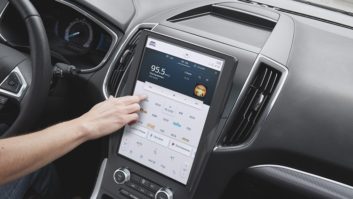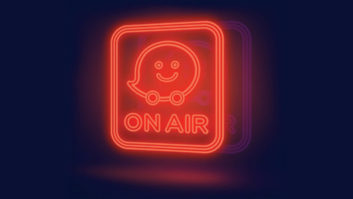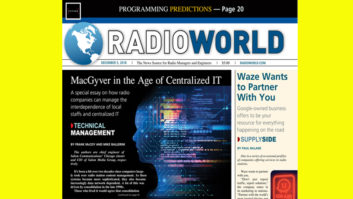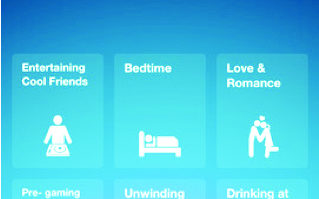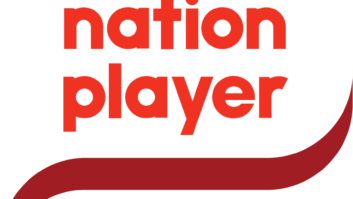One in a series of occasional profiles of companies offering services to radio stations.
Waze wants to partner with you.
“Don’t just report traffic, report solutions,” the company states in its marketing to stations. “Partner with the world’s most trusted driving app and give your audience the traffic news they’ll use. It’s 100-percent free.”
Waze launched more than a decade ago as a crowdsourced traffic app. It was acquired in 2013 by Google for roughly $1 billion.
Mona Weng, global lead of Waze for Broadcasters, spoke at this fall’s Radio Show. We asked her about the company’s message for radio stations.
Radio World: What prompted Waze, known for its driving app, to launch a program called Waze for Broadcasters?
Mona Weng: In July 2011, the Interstate 405 in Los Angeles shut down for 53 hours between the 10 Freeway and the 101 Freeway for construction. The event was named “Carmageddon,” and ABC 7 Los Angeles reached out to Waze for crowdsourced insights and alternate routes they could offer their audience.
After Carmageddon, Waze realized we could help more local media partners with real-time insights and actionable recommendations that would in turn benefit the greater driver community. In the last seven years, we’ve expanded exponentially from one to 850 partners in 70 countries. We partner with radio and TV stations, and news publishers.
RW: What is it exactly, and what can it do for stations?
Weng: We offer our partners a suite of different data and tools that enable them to create meaningful and relevant traffic content on-air, on social and web. For radio, partners can access a web tool called TrafficView that gives them access to their curated Watchlist of top routes (automatically sorted from worst to best conditions currently), an unusual traffic alert feed of newsworthy incidents, as well as a “Waze-O-Meter” that provides an overall pulse on the city, i.e. “Please expect heavy delays; 39 percent of your coverage area is stuck in bumper-to-bumper traffic.”
RW: What is the business relationship required to become a partner; and what costs or revenue can stations expect?
Weng: Waze for Broadcasters is completely free. We offer our partners tools and data in exchange for on-air mentions. Since our relationship is not commercial, our partners have seen significant reductions to their bottom line. Our offering can also help our partners deepen their engagement with audiences, and consequently, increase their revenue.
RW: What are the hardware or technical requirements?
Weng: For radio partners, all you need is good internet to access our web tool via your browser. TV partners need an iPad running the latest iOS, Apple TV to Airplay from the iPad to the studio as well as good internet. Our set-up works for 99 percent of all studio systems globally.
RW: You don’t offer regional exclusive arrangements or white-label solutions. Why?
Weng: Waze was created by the community for the community. We believe it’s our obligation to remain an open platform, and serve the community equally. That being said, partners work with us in different ways, so we are always open to discussing what works best for them.
RW: You talk about station partners being able to add unique value by “focusing on context and solutions.” What does that mean, specifically?
Weng: It’s crucial to consider why people listen to or watch traffic news daily. It’s important to be informed, but their biggest motivation is to understand how road conditions impact their specific commute.
Waze enables our partners to move away from “there are accidents and slowdowns due to a five car pile-up” to “because of the 7:45 a.m. accident at the Shoreline exit, expect average speeds of 27 mph compared to the usual 43 on Mondays around 9:30 a.m. Take the Middlefield Way exit through Rengstorf to save 17 minutes and go roughly 40.”
The context is the current speed/drive times compared to the historical speed and drive times, and solutions are alternate routes that we provide so people know there are other options that can speed up their commute.
RW: What are W on Air, Traffic View and Waze Live Map?
Weng: W on Air is our iPad app for TV broadcasters to easily create visual illustrations of traffic conditions. You can see a few partners around the world using it on YouTube [search Waze Broadcast Program Global Sizzle Reel].
Traffic View is our tool primarily for radio broadcasters. It tells them the pulse of the city (e.g. 33 percent of San Francisco is currently in bumper-to-bumper traffic), displays an automatically updated feed of unusual traffic alerts, with current speeds/drive times listed in comparison to usual/historic speeds/drive times, and also allows them to build a Watchlist of their top routes and usual suspects. The Watchlist is automatically sorted with the worst traffic routes at the top.
Waze’s Live Map is a real-time map that partners can embed to supplement news articles. For example, ABC 10 used our Live Map embed to keep their audience updated on the roads impacted by the fires in California. We also offer a free iFrame that partners can embed on their home or traffic pages.
RW: Give some examples of U.S. radio broadcasters who are active partners.
Weng: WTOP in Washington was our first radio partner in 2014. We work with a number of radio partners in the U.S. and beyond. Waze for Broadcasters is always looking to expand our presence. If you are interested in becoming a partner, sign up at our new Partners Portal [available via www.waze.com/broadcasters].
In October, Waze also launched Waze Audio Player and announced audio partners including iHeartRadio, NPR One, Pandora, Deezer, Scribd and TuneIn. The company was already partnering with Spotify.





